
On 6 March I blogged about having my cake and being able to eat it. Unfortunately, I have been having my cake and eating it every day since then 😦 . I was so inspired by the Healthy Yellow Cupcake recipe that I decided to try making other cakes using beans. Luckily, eating one slice does not require much insulin so I have been indulging myself.
I tried a lemon pound cake recipe I found on a blogger website using chickpeas. It was a total disaster. Not only did the cake fall to bits and pieces, it also had a chickpea taste. Had to bin the whole thing. Yes, yes, I know – if a cake is made of chickpeas, it should taste of chickpeas. But I’m not asking for the impossible here. I know: I want to use another ingredient and have it taste like something else. If you think of carrot cake or zucchini cake or the cupcake recipe above, it is possible! So lesson learnt quickly, I decided to play safe and go back to using white beans and to experiment on my own.
In my review of the Healthy Yellow Cake recipe as well as the chocolate cake recipe I tried, I wrote that both cakes stuck to the muffin liners leading to quite a bit of cake wastage. Also, on the first and second day after baking, there was a slight aftertaste from either the baking soda, baking powder or erythritol and the cake was a bit salty. I found that all this disappeared after two days and therefore recommended waiting and also using a topping to mask the taste. Since then, I’ve been experimenting and today, I think I hit the jackpot with my lemon pound cake which I’d now like to share with you. No aftertaste, no need for topping, no need to wait 24 hours for the beany taste to disappear or 48 hours for the aftertaste mentioned above to disappear. This is a cake you can start eating as soon as it has cooled, on the day of baking and in comparison to ‘normal’ cakes, is still moist after 6-7 days left on the kitchen counter at room temperature. The room temperature in our home is around 21 degrees C. I don’t know what will happen in summer so it may be wise to put the cake into the refrigerator if you have space. I can’t tell if the cake will stay moist longer than 1 week as our cakes haven’t lasted longer than that. I do know that it is possible to freeze the cake without any problems. I think the successful outcome of any cake depends not only on the recipe but also very much on the brand of ingredients used. The recipe below came out perfect using the brands I bought and I hope that you will have success too!
Take a close-up look at the texture of the cake. Need I say more?

Before I give you the recipe, a tip about the baking pan. I noticed that all my baking attempts using beans stick badly. Whether I used paper muffin liners, a non-stick baking pan or generous buttering and even sprinkling the sides with almond meal, cakes made of beans seem to stick! However, the cake didn’t stick when I lined my pan with parchment paper! So make sure you line your pan with parchment. It is a bit of a pain to line the whole pan (base and 4 sides) with parchment so I did it the lazy way. I cut a piece that would cover both long sides and the base of the pan, buttered the pan generously and ‘stuck’ the parchment in place. That means that the two short sides were not lined but only buttered. After the cake was baked, I used a spatula to loosen the sides, the cake plopped out easily and the parchment peeled off nicely with no damage to the cake. So problem solved – cake wastage reduced.
I have an idea but haven’t been able to test it out yet. Using a silicon pan may be the solution. If it works, then I would be able to make muffins because right now, I think muffins create too much wastage.
Update – 5 Oct. 2011 – A silicon pan does work much, much better. If you have a silicon pan, forget the parchment.
Another tip – once you’ve added your baking powder and baking soda, don’t wait too long before putting the baking pan into the oven. The baking soda will start working and you don’t want the bubbles to deflate.
Note: if your stevia is dark brown, this may lead to a slight discolouration of your cake which in no way affects the taste. If this bothers you, add the walnuts so it will look like the discolouration comes from the walnuts!
Low Carb Lemon Pound Cake
1 420gr can (15 oz) white beans, 240gr when drained
5 large eggs
1/2 tsp stevia extract
1 tsp vanilla extract
1/4 tsp salt
95 gr (6 Tbsp) unsalted butter
1/2 cup erythritol
4 leveled Tbsp coconut flour
2 leveled Tbsp almond meal
zest of one lemon
1/2 tsp baking soda
1 tsp baking powder
Optional: 1/2 cup roasted, chopped walnuts
For Syrup
1/4 cup fresh lemon juice
2 tsp erythritol or more to taste
Preheat oven to 180 degrees C (350 degrees Fahrenheit). Line your baking tin.
Drain and rinse beans well. Puree with eggs, vanilla, salt and stevia.
Beat butter till soft. Add erythritol (I usually stir to mix a little before beating as I have a hand-mixer and bits tend to fly all over the place) and beat till well mixed. Add the bean mixture in two batches and mix again till smooth.
Next add the coconut flour, almond meal, lemon zest, baking powder and baking soda. After mixing well, pour into pan, tap it on the table counter to level off the batter in the pan and bake it for 50 minutes.
While the cake is baking, prepare the syrup. Squeeze your lemon, measure 1/4 cup and add the erythritol. Check and adjust sweetness.
Test the cake for doneness with a skewer after 50 min. and bake longer if necessary. The top of the cake will take on a lovely brown hue.
Remove the pan from the oven and poke lots of holes in the cake close to each other with a skewer. Drizzle the syrup all over the cake and leave it to cool.
If you have omitted the walnuts and slice your cake into 20 slices, then each slice has 2.9gr net carbs!!
…..
Nutrition Facts
If baked without walnuts and cut into 20 slices, then each slice has:
Total cal – 74.4 kcal; Fat – 5.7 gr; Total Carbohydrates – 9.3 gr (less Fibre 6.4gr = Net carbs 2.9 gr); Protein – 2.9 gr
If using walnuts, then add 0.4 gr carbs per slice.
…..
Print this recipe – Low Carb Lemon Pound Cake
Tags: almonds, coconut flour, lemon pound cake, low carb

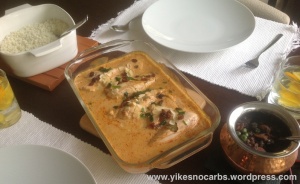




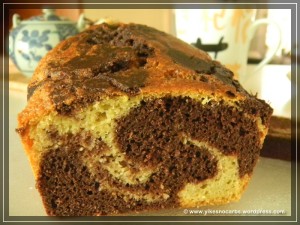
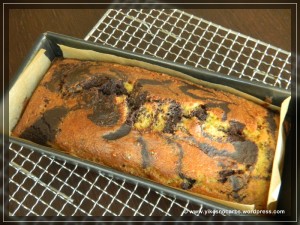



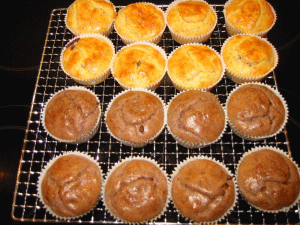
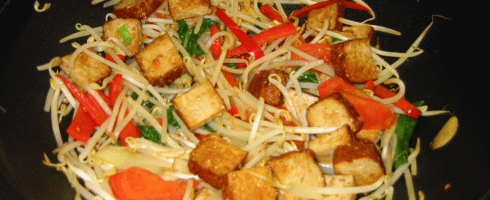
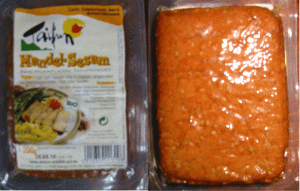
Recent Comments